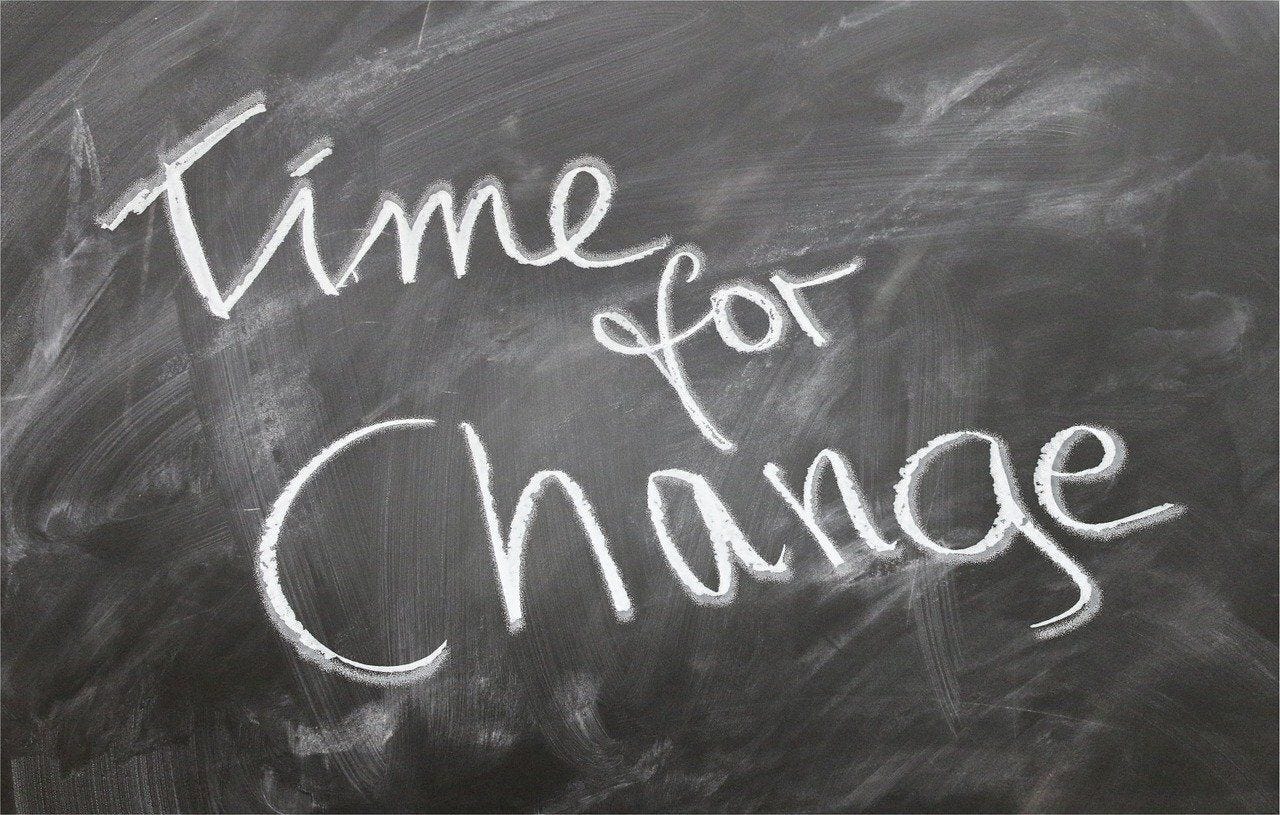Hello November, 🍂
As we start a new month, let’s take a moment to ground ourselves. Today might feel extra stressful for many—Election Day can bring heightened emotions and tension.
If you’re feeling the weight of it, take a deep breath and give yourself permission to focus on what you can control. And as leaders, we’re all trying to stay grounded while guiding our teams through these intense times. Here’s a quick survival guide:
→ Lead with flexibility and a little extra patience
→ Hit pause on any big meetings, chances are everyone’s mind will be elsewhere
→ Make time to check in with your team and yourself
Being mindful today can help keep our energy focused on the positive changes we’re building within ourselves. In line with this, let’s dive into some small, actionable habits that can make a lasting impact in our daily lives.
📌Tip of the Week
The 3-Minute Mini-Breaks
In our busiest days, it easy to forget to pause, but incorporating short, intentional breaks can help you refocus and reduce stress.
Here’s how to make the most of a quick 3-minute break:
Do a “Body Reset”: Stand up, stretch your arms over your head, and take three slow, deep breaths. Try a light stretch to relieve tension in your neck and shoulders. This resets your body and helps clear mental fog.
Refresh Your Eyes: Staring at screens for too long can cause eye strain. And I’ve shared this many times before but it’s too good not to share again - follow the 20-20-20 rule to refresh your eyes.
Mental Reboot with Mindfulness: Close your eyes, inhale for a count of four, hold for four, and exhale for four. A few deep breaths can help you reset and re-center, letting go of any stress that may have built up.
Quick Declutter: Use this time to clear one small area of your workspace—a drawer, your desktop, or even just closing out browser tabs you don’t need. A little order can bring a lot of mental clarity.
Setting aside a few minutes for mini-breaks during your day can have a big impact on productivity, focus, and well being. Give it a try!
Harnessing the Power of Micro Habits
For years, I’d heard about Atomic Habits by James Clear—countless recommendations from friends, colleagues, and leaders I respect. I have to admit, though, that I tend to shy away from wildly popular books. Sometimes they feel overhyped, and I worry they’ll be filled with common knowledge dressed up in buzzwords.
But when I finally gave Atomic Habits a chance, it turned out to be a breath of fresh air. Clear’s insights aren’t just motivational; they’re genuinely practical. Each page was packed with “aha” moments that reshaped how I thought about habits, change, and the small shifts we can make in our daily lives.
In fact, others I’ve talked with about the book had similar feelings:
As Clear puts it, “You do not rise to the level of your goals. You fall to the level of your systems.”
This single sentence flipped the idea of goal-setting for me.
So often, we place all our hopes on achieving big goals, not realizing that it’s our day-to-day systems—the tiny habits we barely notice—that actually guide us there. Atomic Habits drove home the power of making changes so small they almost feel insignificant, but it’s those micro shifts that truly build the foundation for lasting transformation.
Building Small Habits
One of the most empowering ideas in the book is that habits don’t have to be monumental to make a difference.
Here’s how you can start building small habits that are meaningful without feeling overwhelmed:
Start Small, Really Small
Often, we want to make big changes right away, but Clear recommends starting with something so easy it seems almost trivial. The idea is to create momentum without overwhelming yourself.
If you’re trying to build a fitness routine, for example, commit to just five minutes a day.
This feels achievable, which means you’re more likely to follow through. As Clear says, “If you can get 1 percent better each day, you’ll end up with results that are nearly 37 times better after one year.” Small steps today lead to exponential growth tomorrow.
Anchor New Habits to Old Ones
We all have routines, like brushing your teeth each morning or making coffee, things that don’t require much thought. By “stacking” a new habit onto an established one, you’re using an existing trigger to make the new habit automatic.
For example, if you want to build a journaling habit, start by committing to just one sentence each morning right after you brush your teeth. Over time, this association makes it easier for the new habit to stick.
Reframe Your Identity with Identity-Based Habits
Clear explains, “Every action you take is a vote for the type of person you wish to become.”
Instead of focusing on “getting fit,” try reframing it as “I am a healthy person.”
Shifting the focus from achieving a goal to embodying a new identity creates consistency and a sense of purpose that’s harder to shake.
The 2-Minute Rule That Makes Habits Simple and Doable
Clear suggests that any new habit should take two minutes or less to complete.
This approach makes it incredibly easy to begin and significantly lowers the barrier to consistency. If your goal is to read more, commit to reading just one page. By making it simple, you’re much more likely to stick to it.
Atomic Habits reminded me that meaningful change isn’t about an overhaul; it’s about laying down tiny building blocks every day. If you haven’t read it yet, or were hesitant, it’s absolutely worth a spot on your reading list.
🆕Hello, AMA!
You asked and we’re here to answer- an AMA, dear sally newsletter type. Have sensitive questions or concerns and need some advice. Send us a note.
Q: “I have a team member who isn’t meeting expectations, but I suspect personal issues may be a factor. How do I approach this with empathy without compromising our team goals?”
A: It’s thoughtful of you to consider your team member’s personal situation while keeping your team’s goals on track. Here’s an approach that could help:
Start with a casual, private one-on-one. Let them know you’ve noticed they might be struggling lately and that you’re there to support them if anything’s going on. Something like, “Hey, I’ve noticed a few things have slipped recently, and I just wanted to check in—how are things going?” can create a safe space for them to open up.
If they do share personal challenges, see if there’s anything you can do to help, whether it’s adjusting deadlines or offering some flexibility. Even small gestures show that you’re in their corner.
Keep the door open for regular check-ins. Balancing empathy with clear expectations can make all the difference as they work toward getting back on track.
Wellness Corner
The Power of Walking Meetings
Walking meetings are a fantastic way to combine productivity with a quick boost to your physical and mental health. Studies have shown that walking, especially in nature, can increase creativity and reduce stress.
👉 Here are a few tips to make walking meetings work, even if you’re working remotely:
Choose the Right Agenda
Walking meetings are best for brainstorming sessions, casual check-ins, or catching up with a colleague. Keep it informal and agenda-light to allow ideas to flow.
Keep It Short and Focused
Aim for 20-30 minutes max. This timeframe allows for a productive conversation without losing focus.
Community Insights
Thank you to those who joined our in-person walk in nature!
A huge thank you to everyone who joined our first in-person meetup!
It was incredible to connect face-to-face and spend time together. It was a perfect weather kinda day!
Let’s make this month a rewarding one for growth, balance, and connection.
Here’s to building better habits and showing up with intention.
Until next time, stay well.
𝒕𝒉𝒆 𝒃𝒂𝒍𝒂𝒏𝒄𝒆𝒅.𝒃𝒐𝒔𝒔 𝒕𝒆𝒂𝒎
* Consult Your Doctor First: Before starting any new exercise routines, wellness plans, or making significant changes to your diet, it’s important to consult with your doctor or healthcare provider. They can help ensure that any new practices are safe and appropriate for your individual health needs. Your well-being is our top priority, so please take this step before making any changes.





